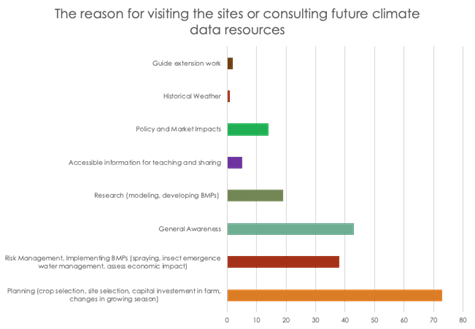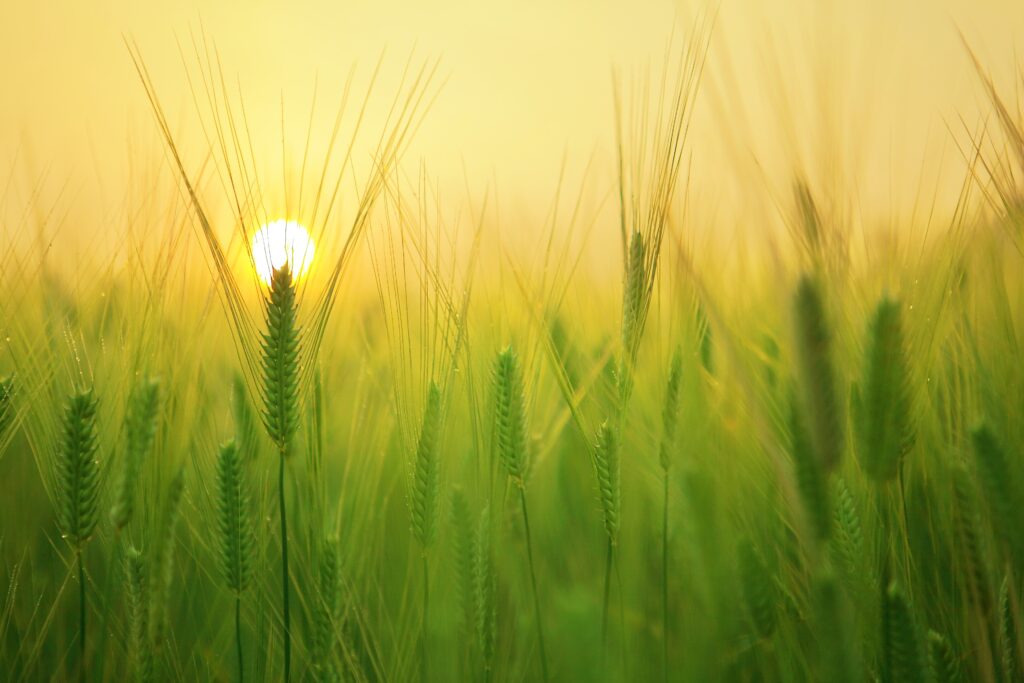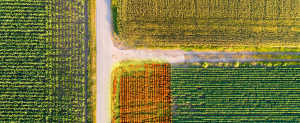 The impact of climate change on agriculture
The impact of climate change on agriculture
According to a study on the state of Canadian agriculture, 84% of people surveyed believe climate variability has a significant impact on their operations. Of the climate factors that affect agricultural operations, extreme and unpredictable weather is the most cited.
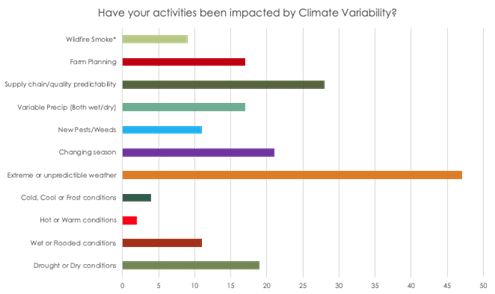
Source: Ag Working Group – Outreach Survey Results
There are several climatic hazards impacting the agricultural sector:
- Droughts and the resulting lack of water supply, which can cause a great deal of damage to agriculture, particularly on production, crop yields and harvests. Ten years ago, droughts caused a drop of nearly $6 billion in Canadian GDP [1].
- Early or late rains can make the ground too wet to support farm machinery and hinder important planting or harvesting phases, as well as the maturation of many crops [2].

The importance of data in understanding and reducing the impact of climate change
Data portals such as ClimateData.ca provide information on the evolution of important climate indicators. The main reasons farmers use climate data sites are to:
- Plan crop selection, site selection and investments based on changes in growing seasons.
- Deploy beneficial management practices (BMPs) to reduce environmental risks such as spraying, insect emergence, water management, economic impact analysis.
Source: Ag Working Group – Outreach Survey Results
ClimateData.ca provides agricultural professionals with indicators that help them assess the critical nature of future situations and make the best decisions. In particular, it provides minimum and maximum temperatures, the amount of precipitation as well as any climate indicator based on one of these three variables. For example, the portal is useful for assessing changes in humidity levels, maximum number of precipitation days and the number of rainy days exceeding certain fixed thresholds (1 mm, 10 mm, and 20 mm).
Example 1: DROUGHT
Drought is an important issue for farmers. Some regions of Canada are more affected than others by extended periods of drought. These extreme events result in significant crop losses and disrupt the sustainability of agricultural operations [3].
ClimateData.ca uses the Standardised Precipitation-Evapotranspiration Index, SPEI [4], to assess the risk of future droughts. According to Figure 1, the 2041-70 horizon shows negative values (coded in brown) to indicate a water deficit. Increased droughts are expected throughout the southern part of the country, particularly in the Prairies.
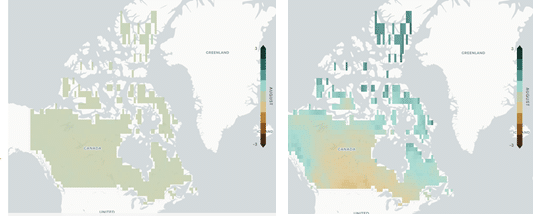
Figure 1: Spatial pattern of future SPEIs for an agricultural year (September to August), RCP8.5, median of 29 climate models. Left 1971-2000 horizon; Right 2041-70 horizon.
With future increases in duration and number of droughts, farmers will be required to adopt coping strategies including improved monitoring using SPEI (Figure 1).
Example 2: Crop growing season
Factors associated with climate change that affect forage crops include higher temperatures, increased CO2, decreased water availability, and extreme weather events.
There is another factor that determines the shape of agriculture in a given region: the growing season (Bradshaw et al., 2004). The growing season for crops is the amount of time plants have to grow in a given year [5]. This has increased significantly (about two days per decade) from 1950 to 2010 and is likely to continue to increase steadily with climate change (see Figure 2).
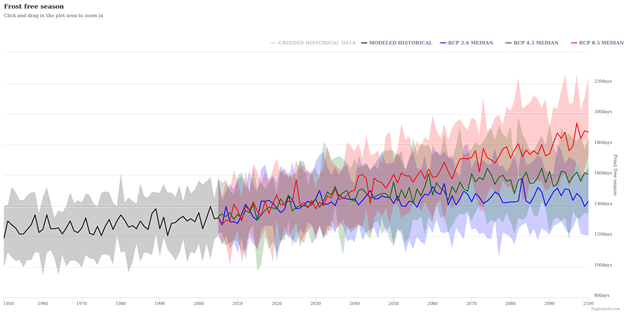
Figure 2: Evolution of the length of the growing season in Killarney, Manitoba.
The longer the growing season, the greater the crop yield potential. However, if there is a decrease in precipitation, it may cancel out the potential for a longer growing season. Even if there is an increase in precipitation during the growing season, higher temperatures can result in significant evapotranspiration [6] and lead to drought conditions.
As with droughts, it would be useful for farmers to keep a watchful eye on growing seasons in the future using ClimateData.ca.
The benefits of ClimateData.ca
Farmers must adapt all the time. [7]
With the climate projections available on ClimateData.ca, farmers and other agricultural decision makers will be better equipped to define adaptation strategies.
Here are some examples:
- Conventional plant breeding and biotechnology provide new botanical varieties that are more tolerant of drought or saline environments. Similarly, farmers are developing new seed varieties that produce good yields with few inputs (fertilizers, pesticides).
- The diversification of forage crops (alfalfa, timothy) ensures that the plants will remain viable all year round, even in cold and dry weather.

- Farmers are also opting for a diversity of species instead of focusing on monocultures, all to ensure better survival. Not all species are affected equally by drought or pests.
- Finally, they may decide to increase their forage stock in good years to compensate for shortages in bad years.
In short, Climatedata.ca is a user-friendly tool that offers a glimpse into the future, allowing the generation of climate projections up to the year 2100.
By anticipating more precisely the future impacts of climate change, agricultural stakeholders will be able to make the best decisions to reduce risks for their crops and their land.
1 https://climatedata.ca/case-study/drought-and-agriculture/
2 https://climateatlas.ca/agriculture-and-climate-change
3 https://www.noscommunes.ca/Content/Committee/421/AGRI/Reports/RP9814809/agrirp11/agrirp11-f.pdf
4 Le SPEI indique la quantité d’humidité en combinant les changements projetés de température et l‘évapotranspiration.
5 https://www.nrcan.gc.ca/climate-change/impacts-adaptations/climate-change-impacts-forests/forest-change-indicators/growing-season/18470?_ga=2.117335430.1828780981.1624478828-483759340.1624478828
6 Soil water transfers to the atmosphere.
7 https://www.noscommunes.ca/Content/Committee/421/AGRI/Reports/RP9814809/agrirp11/agrirp11-f.pdf

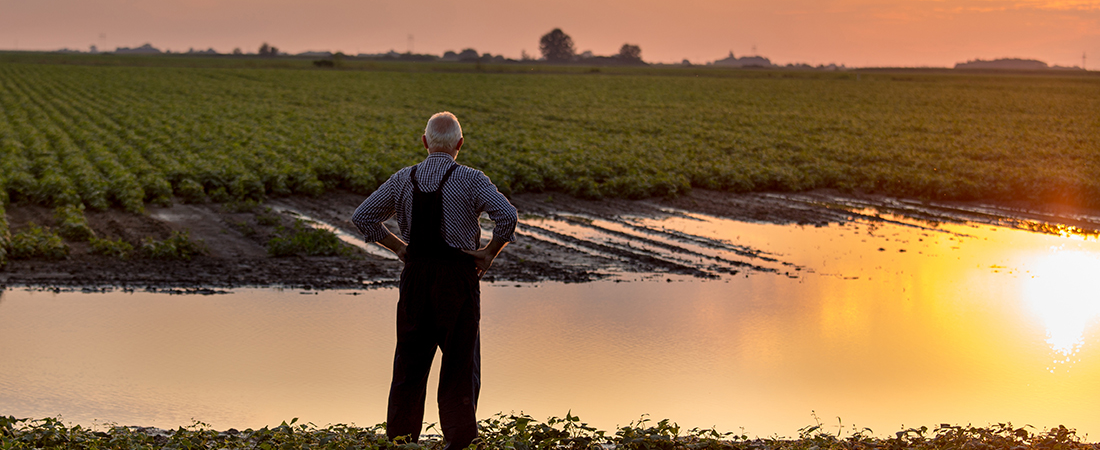
 The impact of climate change on agriculture
The impact of climate change on agriculture